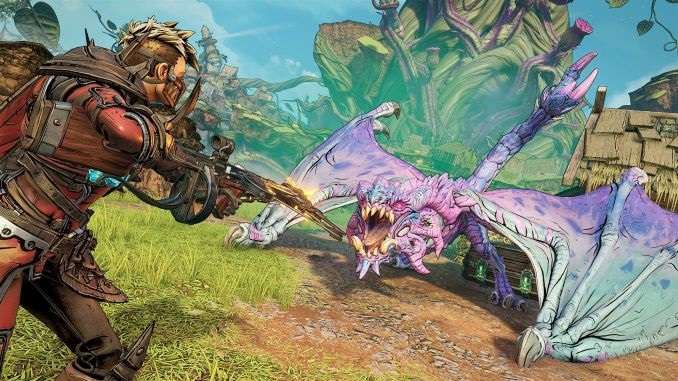Everyone knows that when you’re playing any tabletop role-playing game, the quality of your experience comes down to how good your Dungeon Master, or DM, is. As the arbiter of the game, their meticulous storycraft and improvisational skills not only have to weave an engrossing tale but invite the players to abandon their reality and become one with their characters. Judging from what I’ve played of Gearbox Software’s Tiny Tina’s Wonderlands, Tina may need a bit of a DM refresher.
Expanding on the well-received Borderlands 2 DLC Tiny Tina’s Assault on Dragon Keep, Wonderlands sees Tina and two Vault Hunters playing a game of Bunkers & Baddasses, the in-universe equivalent to Dungeons & Dragons. The move into a “table-top” fantasy world serves as a nice way for the developers to add more things to the traditional Borderlands formula: you use magic instead of grenades; you can increase dexterity, intelligence, or strength stats; and the enemies are typical fantasy fare, such as dragons and ogres.
The final game features a character creation and class selection system, but for this preview I was given the opportunity to play as either a premade Graveborn or Stabbomancer. Every character uses magic, which is acquired throughout the levels by killing enemies or finding weapon chests, along with their own personal class skills. The Graveborn’s skills revolve around dark magic, a system I wasn’t able to get a handle on, so I stuck with the Stabbomancer and their penchant for blades.
After picking a class, I was sent to Mount Craw, an icy themed area filled with graceless goblins and wily wyverns. Three side-quests were available to choose from, each sending you to various parts of the map to kill enemies and fetch whatever item has been requested. Sadly, out of the three quests only one was all that memorable or well-written. Throughout my few hours of playtime, the writing generally fell flat, save for some clever jokes that were few and far between. Maybe I’m not the target audience, but much of the humor felt anachronistic, stuck in Borderlands 2’s edgy heyday rather than adapting for modern audiences.
I couldn’t help but make those comparisons throughout my entire experience. I felt that most things the game tried to do, Gearbox already did better throughout any of the four previous Borderlands entries. Wonderlands simply lacked much of the charm that has kept the series from falling into cringeworthy 2010s obscurity. The dialogue is bland, there were no memorable side-characters, and even the few boss enemies weren’t safe from feeling generic. Granted, some of this may be due to the demo experience; Mount Craw was not a particularly engaging area in aesthetics or quest variety. Everything boiled down to a cycle of entering the next area, killing some enemies in an arena, destroying some machine, killing more enemies that spawn, rinse and repeat.
Thankfully, the gameplay is the one major highlight, and I’m happy to report it feels just as good as ever to obliterate enemies. The gunplay is frantic and kinetic, and the enhanced melee combat allows for a fun mixing of distance shooting and strategic swipes. The magic system fits neatly into the gameplay loop as well, replacing grenades with a deluge of destructive options that recharge after use. When I was zipping around battlefields, pumping enemies full of arrows from my revolver before summoning a massive blade to rip their health bars to shreds, I was able to forget about my nitpicks and enjoy a mindlessly fun time—and that’s something Borderlands has always excelled at.
Granted, this joy came solely from my weapon load out; having the wrong weapons will make combat an utter slog. Obviously this is another preview issue, as players of the released product will find the weapons they like best and stick with them. There are elemental systems at play as well, allowing you to shoot electricity, ice, or dark magic at enemies, but I never found much strategy beyond “shoot until they die” to be necessary.
If you like games within the Borderlands series, Tiny Tina’s Wonderlands is targeted directly towards you: it’s more of the same with a shiny coat of fantasy-themed paint. But that’s also it’s issue; the paint has begun to peel and show just how shoddy and old the foundation is. There are positives, like the six classes, a seemingly complex character creation system, and a sincerely interesting themed overworld that wasn’t included in the preview. But overall, Tiny Tina’s Wonderlands was less wonderful than it was familiar. It’s up to you whether or not that’s a bad thing.
Tiny Tina’s Wonderlands launches on current and last generation consoles—except for the Switch, sorry Nintendo—and PC on March 25.
Mik Deitz is a freelance writer and Paste intern. They inhale stories in videogames, films, TV and books, and have never finished God of War (2018). Yell at or compliment them on Twitter @dietdeitz.
